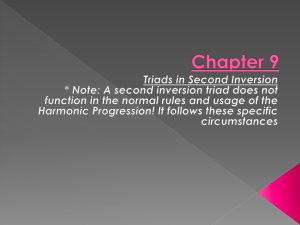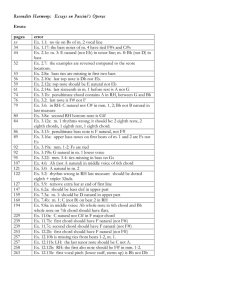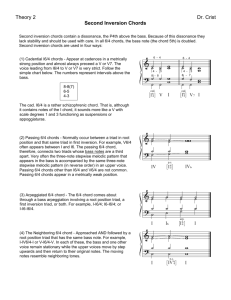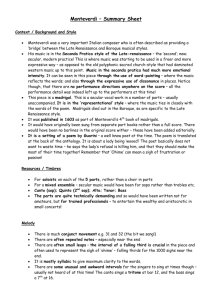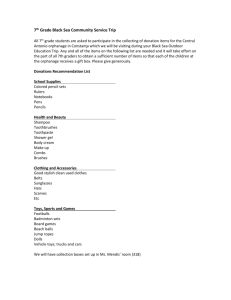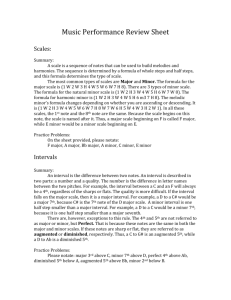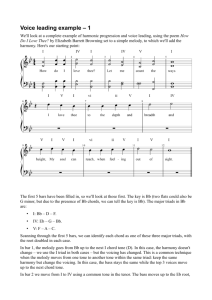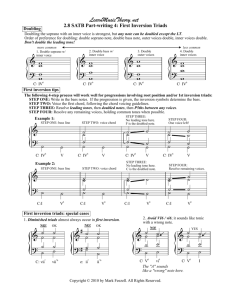HARMONY 4 / 2nd INVERSIONS & DOMINANT 7TH 2nd
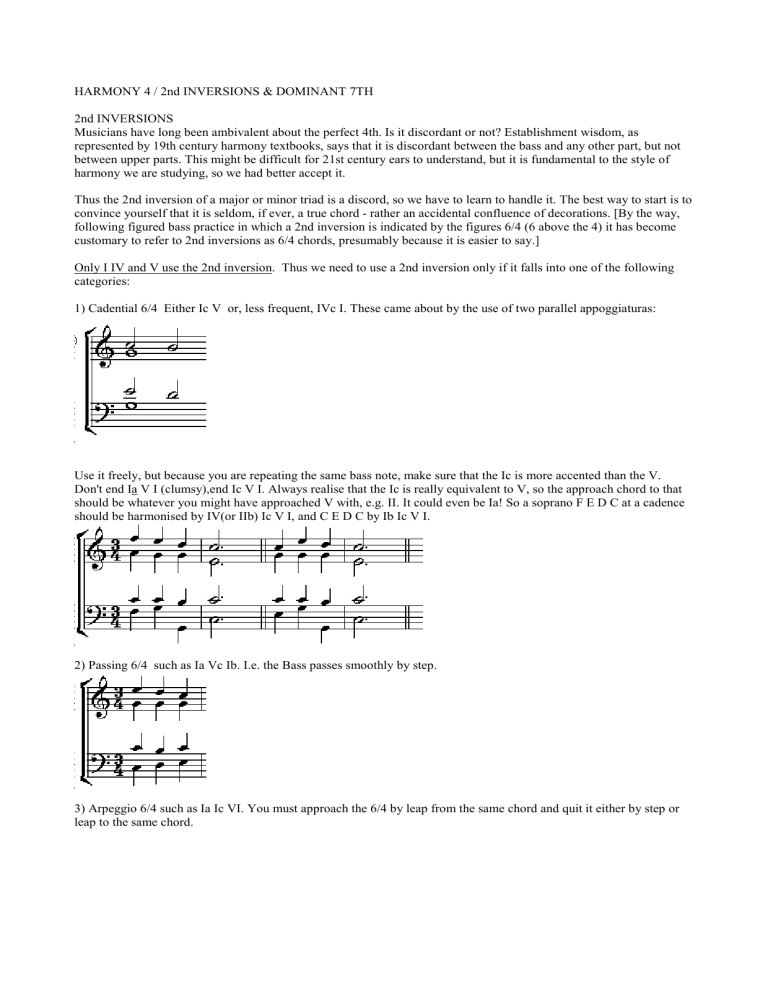
HARMONY 4 / 2nd INVERSIONS & DOMINANT 7TH
2nd INVERSIONS
Musicians have long been ambivalent about the perfect 4th. Is it discordant or not? Establishment wisdom, as represented by 19th century harmony textbooks, says that it is discordant between the bass and any other part, but not between upper parts. This might be difficult for 21st century ears to understand, but it is fundamental to the style of harmony we are studying, so we had better accept it.
Thus the 2nd inversion of a major or minor triad is a discord, so we have to learn to handle it. The best way to start is to convince yourself that it is seldom, if ever, a true chord - rather an accidental confluence of decorations. [By the way, following figured bass practice in which a 2nd inversion is indicated by the figures 6/4 (6 above the 4) it has become customary to refer to 2nd inversions as 6/4 chords, presumably because it is easier to say.]
Only I IV and V use the 2nd inversion. Thus we need to use a 2nd inversion only if it falls into one of the following categories:
1) Cadential 6/4 Either Ic V or, less frequent, IVc I. These came about by the use of two parallel appoggiaturas:
Use it freely, but because you are repeating the same bass note, make sure that the Ic is more accented than the V.
Don't end Ia V I (clumsy),end Ic V I. Always realise that the Ic is really equivalent to V, so the approach chord to that should be whatever you might have approached V with, e.g. II. It could even be Ia! So a soprano F E D C at a cadence should be harmonised by IV(or IIb) Ic V I, and C E D C by Ib Ic V I.
2) Passing 6/4 such as Ia Vc Ib. I.e. the Bass passes smoothly by step.
3) Arpeggio 6/4 such as Ia Ic VI. You must approach the 6/4 by leap from the same chord and quit it either by step or leap to the same chord.
4) Auxiliary 6/4 such as Ia IVc Ia
In all cases, DOUBLE THE BASS NOTE. That's it. Keep to the rails.
DOMINANT 7th
The addition of a fourth note (1 3 5 7 ) to the triad V makes it unnecessary to double anything, though this can happen: the 5th will sometimes be omitted; you can even omit the 3rd and it doesn't sound too bare. If you omit the root you get
VII or VIIb which we have agreed is an incomplete V7. But generally we have all four notes.
The two discordant notes (3rd and 7th) MUST NOT be doubled, and MUST resolve (one up, the other down.) There is one exception to this, see below. One more time: the 7 th
must fall a step; the leading note must rise as usual.
Oh, by the way, if you repeat V7 in a new position e.g. V7a V7b V7d Ib, of course the critical notes in the first two chords cannot resolve yet: all that matters is that when the chord finally does resolve, whoever last has the 3rd and 7th must resolve properly.
So V7a resolves on to Ia or VI.
It cannot resolve on to Ib because you would then have a doubled major 3rd in Ib, plus implied consecutives.
V7b clearly resolves on to Ia, possibly VIb.
V7c resolves on to Ia (normal) or Ib. In this latter case we have the permitted exception that the 7th can rise, in 3rds with the bass. Sounds OK.
N.B. The consecutive 5ths in the top two parts are OK, one is a diminished 5 th
. (You had spotted that, hadn’t you?)
V7d always resolves on to Ib.
There you have it - get on with it! Dominant 7th is just about the most useful chord ever invented. It will be particularly useful when we employ modulation. Worth observing in passing that, although no ONE chord can define the key, the
Domt 7th comes nearest to doing so, leaving us in doubt only whether we are going to a major or minor tonic.
